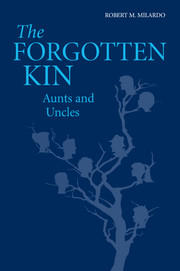Book contents
9 - Balancing the Composition
Published online by Cambridge University Press: 20 January 2010
Summary
Families are often defined in rather prosaic terms, with more than a hint of ideology. A family comprising parents and children in one nuclear household becomes the standard-bearer, and of course many families are organized in this way; but many are not. In defining families simply in terms of the physical location of parents and young children, we properly underscore the importance of parent–child relationships, but at the same time overlook other ways in which families evolve, including households headed by single parents, blended families, and adults who reside together without children (e.g., because their children are living independently or because they are childless). We neglect asking the all-important question of where the grandparents and adult siblings are living and how often they communicate and become active in supporting each other, including sharing in child care. Standard definitions of families as singular households are in part a simple description of how people live and organize some of their relationships, however inaccurate, and in part implicit prescriptions for how lives should be lived. In one insightful view, feminist scholar Dorothy Smith defines the Standard North American Family (SNAF) as an ideological code representing a legally married heterosexual couple sharing a household with children. As an ideology, it is pernicious:
SNAF infected texts are all around us. They give discursive body and substance to a version of the family that masks the actualities of people's lives or at best inserts an implicit evaluation into accounts of ways of living together in households or forming economically and emotionally supportive relationships outside that do not accord with SNAF.
- Type
- Chapter
- Information
- The Forgotten KinAunts and Uncles, pp. 191 - 204Publisher: Cambridge University PressPrint publication year: 2009



